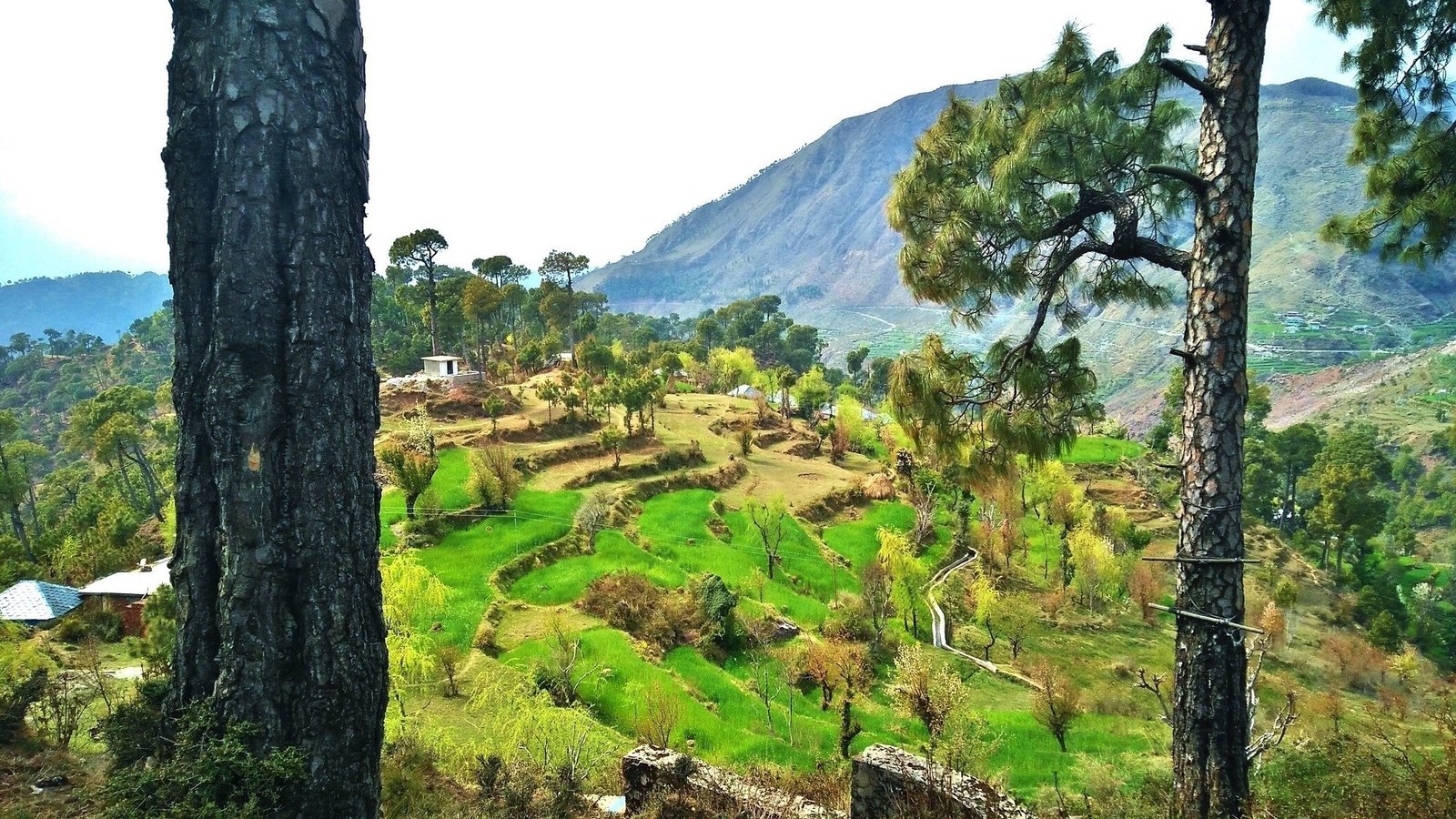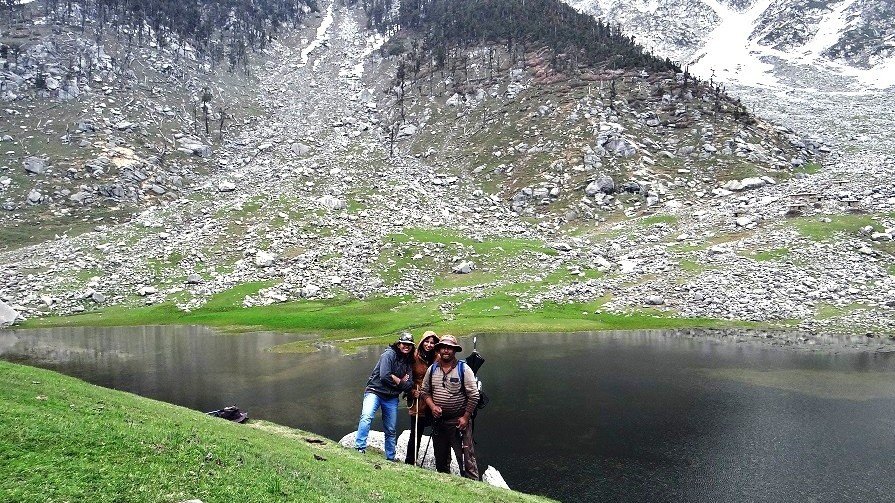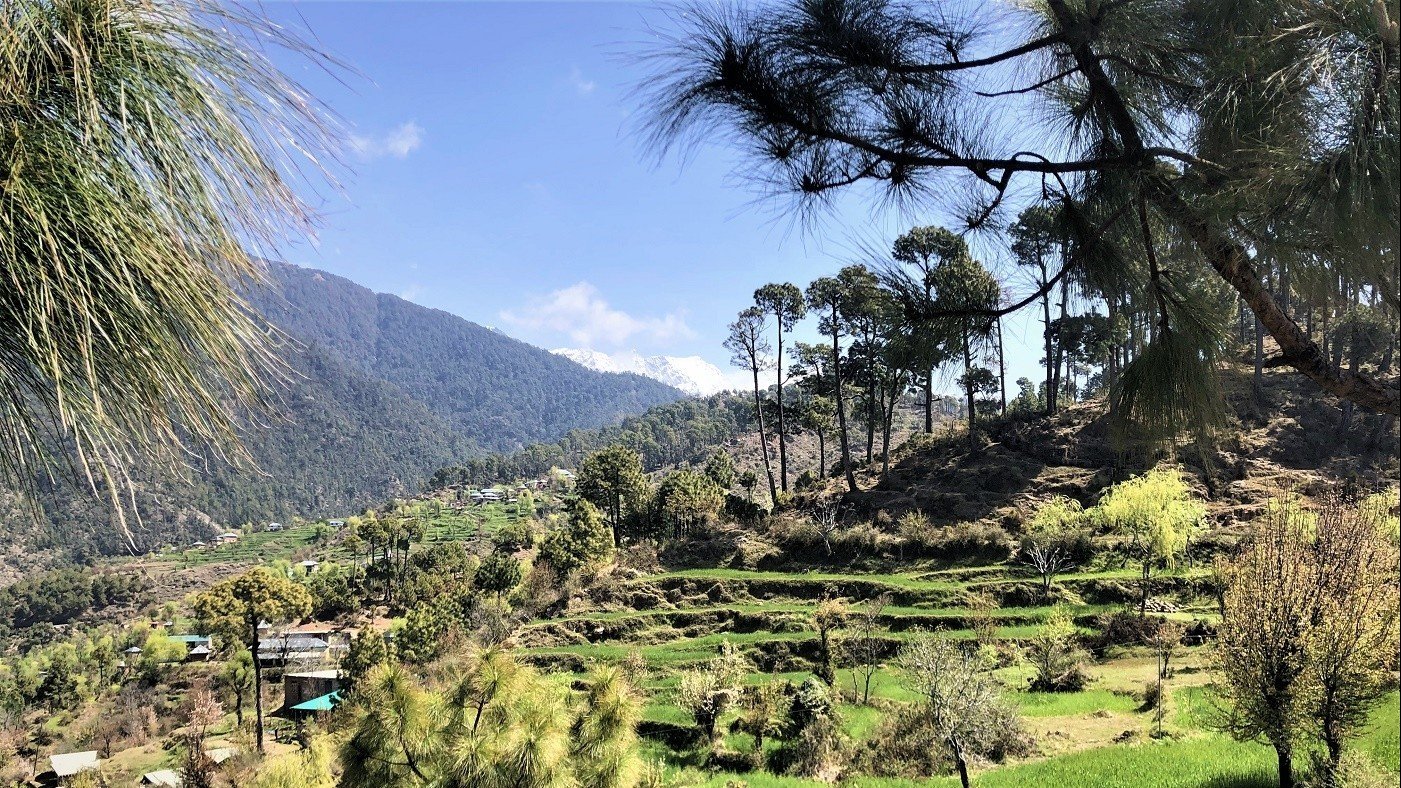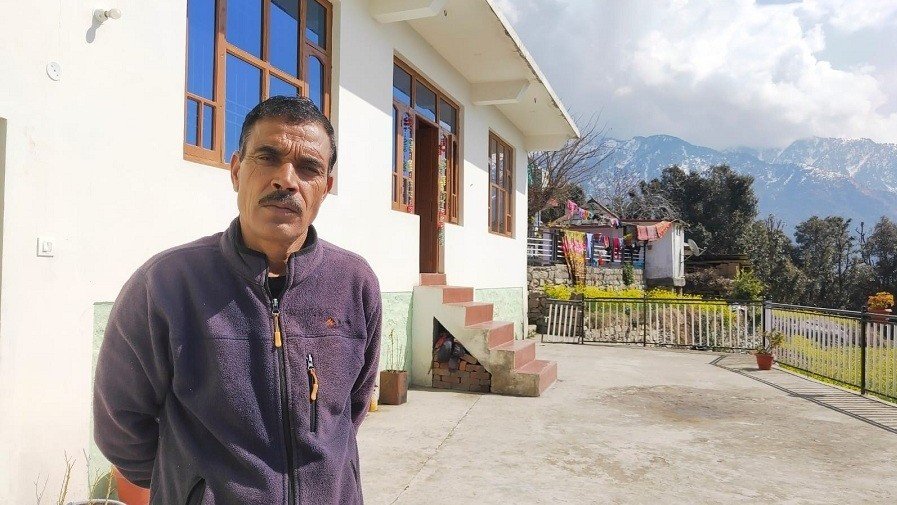From where do the Kareri Lake treks start and how many routes are there?
There are 2 routes to attempt the Kareri Lake trek. One route is up the Nyund River from the Kareri village side and the other route is up the Khauli river from Salli village side. The Kareri village route is an old existing route that starts from Naddi descends down to Ghera village and via the Kareri village to Kareri Lake. The route up Khauli river which starts from Salli village, is an easier and more scenic and an open valley trek route. A new road has come up now which connects both Salli, Nolli and Kareri villages hence there is no need to start the trek from Naddi anymore. One should start the trek from either
Snow Monk Camp at Salli village or from the Nolli village. An advantage of the Khauli Valley is that there are other trek routes also which one can attempt like Druni Tal, Baleni Pass, Lam Dal Lakes and to the Boh valley hence giving the advantage to start treks from Salli village in Khauli valley.
Is Kareri Lake trek safe for Solo Travelers, Backpackers and Women Travelers?
The Kangra district of Himachal Pradesh is considered to be a very safe place and hardly has any crime rate. Far away from the commercial towns of Dharamshala and Mcleodganj, the journey and the Kareri Lake trek may be considered safe for solo and women travelers. However, it is always advisable to book your trek through a licensed and registered trekking agent who specializes in such trips. The Ministry of Tourism, Government of India has a list of approved adventure tour operators -
CLICK HERE
How Long is the Kareri Trek? What is the duration of the trek?
The Kareri Lake trek can be done in many variants. The trek can be accessed from 2 different routes and ranges from one night to 5 days. It is also considered as a weekend trek as many people who have less time can do this trek by just spending an overnight at the lake side. One can drive upto Nolli village after having breakfast at the Snow Monk Camp and start walking up to the lake. Post staying for a night at the lake, then descend back to Nolli village and drive back to Pathankot/ Gaggal for an onward journey. However, this trek should be done at leisure so as to get acclimatized properly and also to enjoy the grandeur of nature. The ideal itinerary should be with at least 1 night of acclimatization before starting the trek in Salli village, district Kangra and then minimum 2 nights while on the trek. One may also choose to spend an extra night post finishing the trek in Salli village relaxing. Another option can be to make Rehla as the advanced base camp in the Khauli valley starting from Salli village. Using Rehla camp as a hub, one can do day treks to Kareri Lake, Druni Lake, Baleni Pass and the 7 sacred lakes of Lam Dal.
Is There Any Network Availability at Kareri Lake Trek?
Nowadays there is cell phone connectivity almost everywhere and in the remotest part of the country. Although this also takes away the charm of being in the outdoors and wilderness. The villages of Salli and Kareri have networks of many cell phone providers such as Airtel, Reliance and BSNL. As one treks up towards the Kareri lake trek, the network signals get weak and finally disconnected as one enters wilderness and uninhabited areas of the forest. There is no cell phone signal at the Kareri Lake
Can Kareri Lake trek be organised in a Deluxe, sustainable and a more luxurious manner?
If you want to visit Kareri Lake trek as a deluxe option, where one can start from an organised base camp with all basic amenities, lovely home cooked food, comfortable living arrangements, good reliable local guides, then there is only one good option for this at present. Snow Monk Camp is about 16 kilometers away from Kareri Lake. It is known for its superior arrangement and deluxe camping arrangements. One has 2 options to choose to visit Kareri the Lake i.e. via Nyund River or Khauli River.
Are there any ATMs on the way to Kareri Lake trek?
There is no ATM on the way during the Kareri Lake trek. You can find them nearest in Dharamshala, McLeodganj or in towns on the way to Kareri village such as Shahpur and Raith. It is advisable that one should carry a sufficient amount of cash if you have not prepaid to your trekking agency.
What is the charge for offloading service and what is it?
For trekkers who cannot carry their own bags, they can book a porter or mule. Charges for a personal porter who can carry your bag and also walk along with you can be around Rs 1000 per day. If you wish to put your bag on the mule going on the trek with goods for you (provided there is space), you may be required to pay Rs 500 per day per bag subject to a maximum of 10kgs. Please also note that do not bring suitcases but duffel bags or rucksacks as they are easy to carry on mule or by a porter
How physically fit should a body be to go for the trek Kareri Lake?
The Kareri Lake trek is an easy to moderate trek, where there are steep climbs also in some sections. There are no villages enroute the trek as one leaves the Kareri village. Trekking to Kareri Lake is not too difficult, but building up stamina a few days before is highly recommended as you will enjoy the trek much more then. To keep the body fit, for a minimum a month before the trek, jog for 30 mins, or cycle for around 30kms or swim for 30 mins. In addition, add weight training exercises also. Now with this, you will be fit to enjoy the trekking to Kareri Lake.
Is Kareri Lake a good trek for beginner trekkers?
Yes, Kareri Lake trek is a good trek for beginners, in which you cover a distance of about 8 to 10 kilometers per day. Every day involves some steep uphills and some descents.
What is the minimum age required for Kareri Lake Trek?
It is an easy to medium trek, which is good for beginners. Children of even 10 years of age can also come on this trek, but under the supervision of a parent while trekking.
Can we customize the Kareri Lake trek?
Certainly, you can customize your Kareri Lake trek. One can increase the number of people, extend your trekking days and customize the program. You can combine Kareri Lake, Baleni Pass, Lam Dal Trek and traverse to Triund and Indrahar Pass also.
How many people can stay in a tent?
Alpine tents come in many specifications. Usually tents come in configurations of two, three & four people in a tent.
Kareri Lake Trek in One Day?
Kareri Lake cannot be done as a single trek. Return trek, even if done from Nolli village, will be 18 kms. And then one will not be able to enjoy the beauty of Kareri lake if one does not stay there. It is advisable to do the Kareri Lake trek over minimum 1 night and 2 days only if one is physically fit














